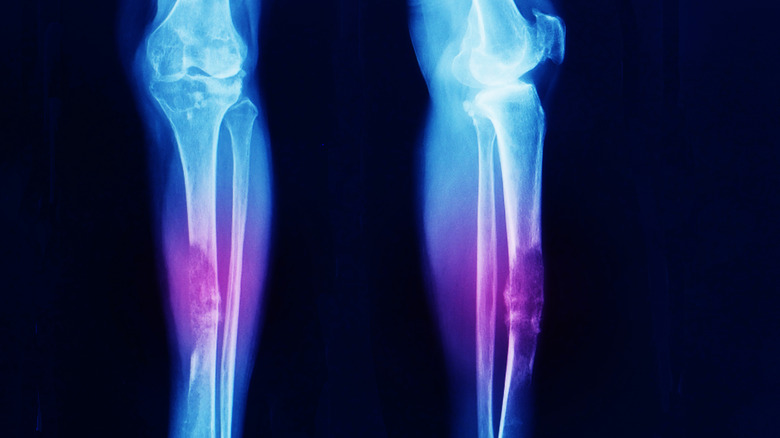This Is What Happens When A Bone Fracture Goes Untreated
If you've fractured a bone and think it's probably no big deal — think again. While there are different types of fractures, and some are more serious than others, it is important to always see a doctor if you have any kind of fracture.
According to the experts at the Cleveland Clinic, bone fractures are common, affecting millions of people in the U.S. every year, and they typically occur as a result of a car accident, engaging in active sports, or a fall. The reason fractures are so common is because, while bones are strong, repetitive use or a sudden force can adversely impact them. Older adults are especially prone to fractures due to osteoporosis, which weakens bones as people age.
If you've injured yourself and if you're not sure it's a fracture, there are some signs that can give you a hint, such as the development of a bump, swelling, and, of course, pain, among others. That said, you won't know for sure if you have a bone fracture until you get an exam and imaging test by a healthcare provider.
Why treating a bone fracture is essential
While bones have a good track record for healing, the experts at Mid Atlantic Orthopedic Associates explain that an untreated bone fracture can lead to either "a nonunion or delayed union." In a nonunion situation, the bone never heals; if you are experiencing a delayed union fracture, this can eventually heal, but it will take longer and the bone may not reset properly. This is why it is essential to see a doctor for any kind of fracture.
In regard to treatment, the experts at Medical News Today explain that your doctor will first ask you to describe the circumstances that led to the fracture and then likely take an X-ray, or, in some cases, an MRI or CT scan. This will help to confirm the more specific nature of your fracture. For instance, if you have a hairline fracture, your bone will have a small, partial fracture. If your doctor determines you have an impacted fracture, that means part of the fractured bone is impacting other bones. There are numerous other fracture types, and once your doctor makes a diagnosis, they can determine the best course of treatment. Best case scenario: Your doctor is able to manipulate the fracture externally or determines the bone can heal on its own. Worst case scenario: You will need surgery if the fracture is severe.
While fractures are not uncommon, experts say you can help prevent them by taking actions to improve your bone density, such as getting adequate amounts of calcium and vitamin D in your diet and incorporating weight-bearing exercises into your workouts.


